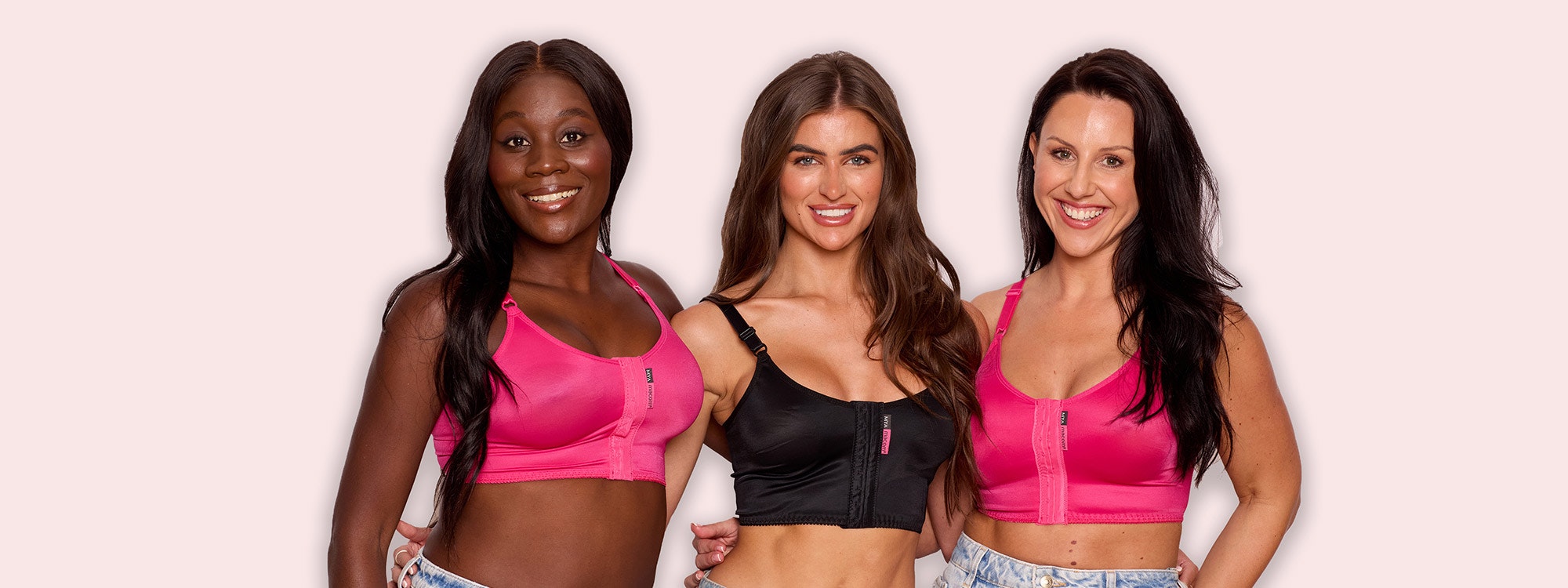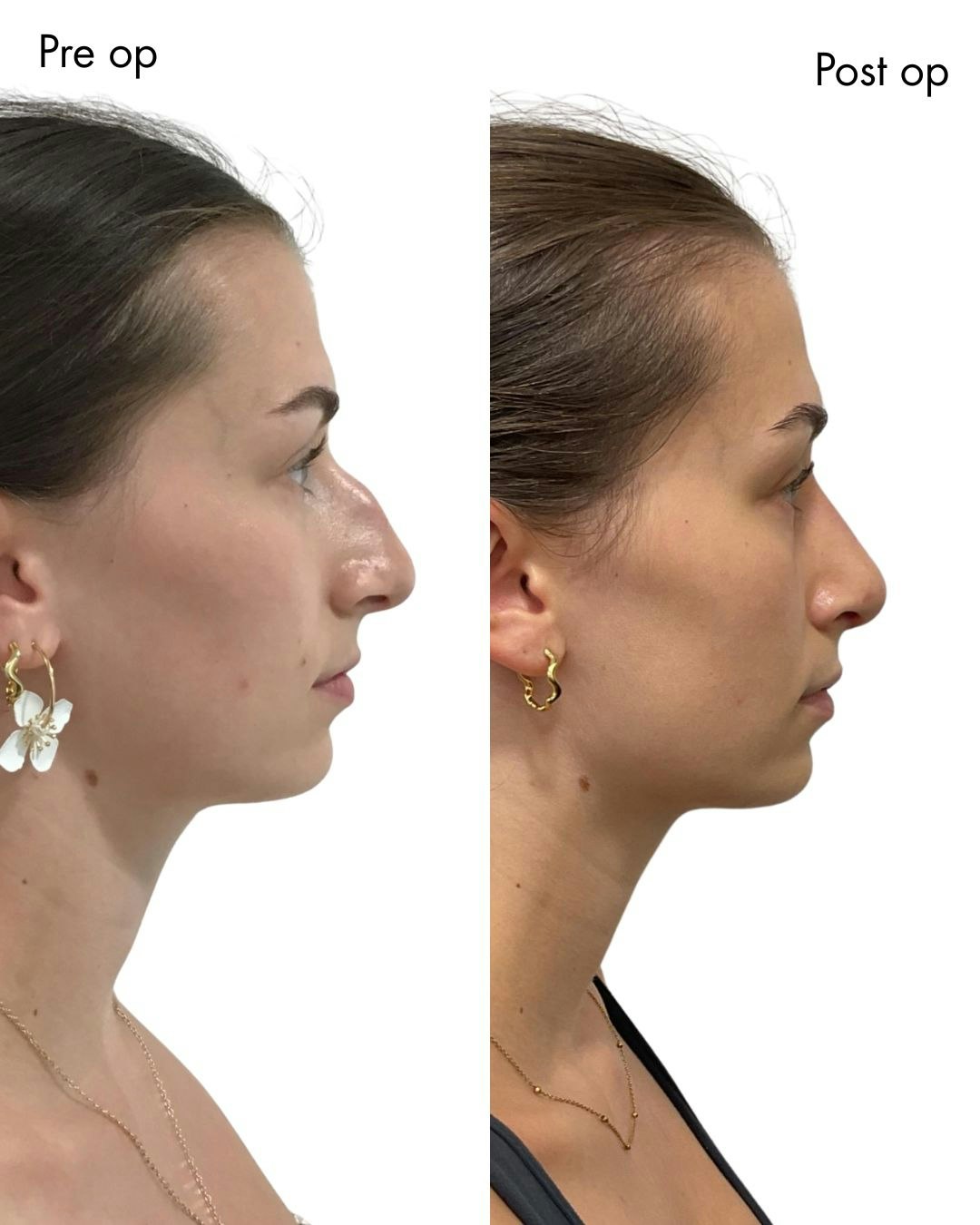What is a breast implant?
A breast implant is a medical device that is surgically inserted to change the shape, size and look of a woman’s breast. Breast implants can either be made from silicone or saline, with silicone being the most popular material used in the UK and the implant of choice here at MYA.
The breast implants that MYA uses (Mentor Implants) are made from a gel substance that is soft and fluid in feeling, but the gel acts like a unit (a solid rather than a liquid), which helps it keep its shape. Our patient coordinators describe the gel material like the inside of a jelly baby and the gel offers the natural ‘give’ of breast tissue.
Implants come in different cc’s (unit of volume), profiles (widths), shapes and firmness of gels. Your surgeon will typically recommend a range of implant options to suit your frame and size before you make the final decision.
Do I need a boob job to change the shape of my breasts?
Breast implants aren’t always necessary to alter the shape of your breasts. However, if you’re unhappy with their overall shape and size, it is an option.
Following changes to the shape of their breasts due to ageing, pregnancy and breastfeeding, many women choose to have breast implants to create a symmetrical shape and larger size.
What is the difference between a round & shaped breast implant?
There are two implant shapes that your surgeon can offer you at your breast enlargement consultation: a round implant or an anatomical implant (commonly known as a ‘shaped’ or ‘teardrop’ implant).
Any type of implant will add volume to the breast but round implants add volume to both the lower part of the breast and the higher part of the chest. This high breast area, called the ‘upper pole,’ does not normally have much projection without an implant.
Teardrop-shaped implants offer women a more contoured look that is more similar to a natural breast shape with less volume in the upper pole and more at the base.
How are breast implant sizes measured?
Implants are measured in CC
Breast implants are measured in cubic centimetres (or CC’s for short), not in cup sizes like bras. An example breast implant size would be: 500cc.
A cup size cannot be guaranteed as all retailers measure slightly differently and every patients’ body is different. A 500cc implant can look much different on two different people because they will have different body frames and starting breast tissue. Someone with broad shoulders may need a larger or wider implant to achieve a full “D cup” compared to someone with a very small frame who is looking to achieve a similar cup size.
See below for some examples of the same implant sizes on different women. You can see how body shape, frame, starting breast tissue, breast shape and nipple position mean that the same sized implant won't ever look the same on every woman.
What size are 300cc implants:
What size are 500cc implants:
Implants come in different profile/projections
The profile of an implant refers to how much it projects forward when you are standing and is described as low, moderate or high profile. You and your surgeon will discuss what profile implant is best for you, and what will help you achieve your desired look.
Low profile – low profile breast implants are wide in shape, with minimal projection from the chest. Low-profile implants are more flattering for women with wider chests.
Moderate profile – moderate profile breast implants project from the chest more than low profile implants, but not as much as a high profile implant. Moderate profile implants do not create excessive width on the side and are therefore appropriate for women with smaller, more narrow chests.
High/ultra high profile implants – high-profile breast implants have a narrow base width for maximum projection. High-profile implants give rounded fullness on the top of the breasts and some breast lift. This effect creates the most prominent cleavage of the profile options.
Choosing the right size breast implant for you
Choosing your breast implants is an exciting step in your cosmetic surgery journey. When you attend your surgeon consultation, your surgeon will listen to the desired look you are hoping to achieve, examine your breasts, take measurements and make a range of recommendations for implant sizes, profiles and shapes.
The right implant size for you depends on a lot of factors, including:
the look you are wanting to achieve
your beginning breast shape and body frame
your existing breast tissue
what your surgeon recommends following your physical examination
The surgeon will also ask about your lifestyle as this will help inform their recommendation of implant placement and size. For example, if you are very athletic, this will affect what your surgeon recommends.
To start with, it helps you to know what kind of look you’re after. You can bring in photos of augmented or natural breasts to communicate what you’re looking to achieve in terms of size. Remember: a surgeon won’t be able to guarantee a specific look, as your final result is dependent on your existing physiology.
During the examination, your surgeon will take measurements of your chest and breasts, identify any asymmetry or tubularity, check skin elasticity (to ensure your skin can handle the weight of an implant) and for any potential ptosis (breast sagging) and note nipple location (facing forward, outward or downward). The surgeon will also ask about your lifestyle as this will help inform their recommendation of implant placement and size. For example, if you are very athletic, this will affect what your surgeon recommends.
Following the examination, your surgeon will most likely make a recommendation of a range of 2-3 different implant sizes, for example, 300cc, 350cc, and 375cc. The decision is ultimately up to you on which size you end up choosing. After meeting your surgeon, you are able to use our Mentor Sizing Kits with your patient coordinator (PC) to try on the different implant sizes.
Implant sizers look more like silicone chicken fillets than implants and their job is to mimic what the implant would look like once they’re inside you but also gives you a chance to feel the weight of the implants.
You’ll try these on with a sports bra and you can wear your normal clothes over the bra to get a feel for the final look. You’ll normally be asked to take some time and think over which of the sizes you liked the most before making your final decision on size. If you need to, you can meet with your PC again to try on the implant sizers. We’re happy for you to come in again because it’s important that you’re happy with your choice.
Following your surgeon consultation, you are given a 14-day cooling-off period, which is an opportunity to reflect on all the information given and decide whether or not surgery is right for you. It’s a big decision and you need to make sure that this is something you really want. If you do decide to go ahead, you can book an operating date and the countdown will begin!
Get yourself onto our MYA Forum - which has more than 75,000 users - and you can talk through implant sizes, surgeons, and recovery tips with past patients to find out first-hand everything you need to know about your procedure.
What factors influence my breast implant size?
The final decision of which breast implants you will have is ultimately down to you, but there are a few factors that may influence your decision.
Lifestyle
If you regularly do vigorous exercise, a very large implant may not be for you. Remember that a big implant comes with a much heavier weight, so may cause discomfort when you’re at the gym.
Wardrobe
Think about what you like to wear before deciding on a breast implant size.
If you have a smaller chest and want to feel more confident in underwear and swimwear, think about the look you wish to achieve - does it include a bigger size, or simply some extra shape to create a cleavage?
Age
If you’re planning to have children and breastfeed, it’s important to remember that this can influence your breast size. After childbirth, it’s common for women to experience sagging and breasts that hang lower than their pre-pregnancy body.
If you’re interested in having breast augmentation surgery, we recommend you wait until you’ve had children before undergoing the procedure, to maintain the shape.
Test breast implant sizes with the implant rice test
While breast implant sizers are helpful in deciding which implant is right for you, they can only be used at one of the MYA clinics.
For an at-home alternative, try out the viral implant rice test. This is a great way to visualise the projection you will achieve with a breast implant and can be done in the comfort of your own home.
Try them on with different clothing items and bras to give you an indication of what life will be like post-op.
Learn more with MYA Cosmetic Surgery














